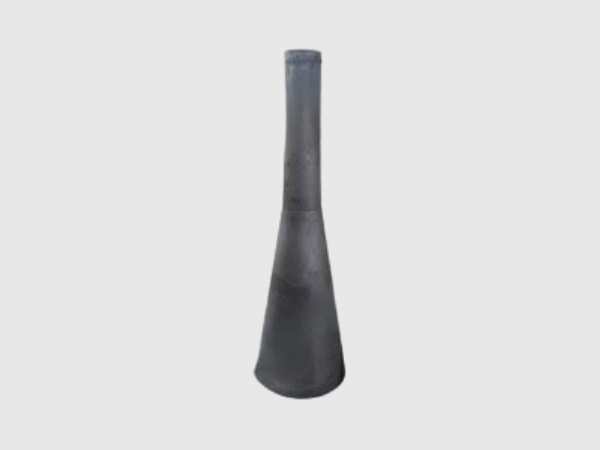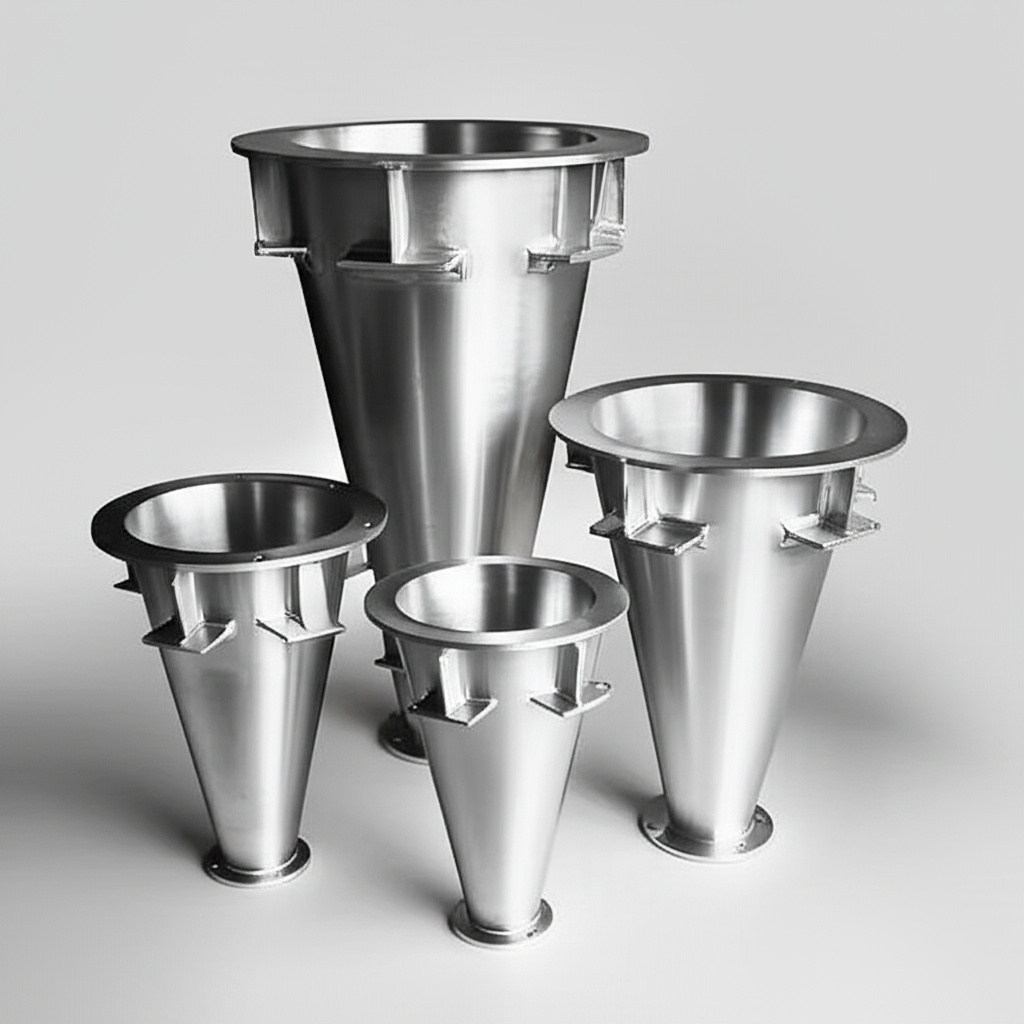Silisyòm Carbide Ceramic Heat-Spreader Substrates (R‑SiC/SSiC/RBSiC/SiSiC) for Thermal Management

Compartilhar
Visão geral do produto e relevância do mercado de 2025 para o Paquistão
Silicon carbide ceramic heat-spreader substrates—R‑SiC (reaction-bonded), SSiC (sintered), RBSiC (reaction-bonded siliconized), and SiSiC (silicon-infiltrated)—are the thermal backbone of modern power electronics. By combining high thermal conductivity, low density, excellent stiffness, and outstanding wear/erosion resistance, these ceramics move heat rapidly from SiC MOSFETs, SiC Schottky diodes, IGBT legacy stages, magnetics, and high-power passives into compact air or liquid cooling systems. For Pakistan’s textile, cement, and steel industries, and the country’s growing data centers, heat-spreaders are mission-critical to keep cabinets cooler, extend component lifetime, and sustain >98% system efficiencies under hot, dusty conditions and grid disturbances.
Għaliex dan huwa importanti fl-2025:
- Thermal headroom equals reliability: With plant rooms hitting 45–50°C, spreading heat uniformly across cold plates and heatsinks stabilizes junction temperatures and prevents hot-spot driven failures.
- Higher switching frequencies with SiC: Efficient heat extraction makes 50–100 kHz operation viable, shrinking magnetics and cabinets by 30–40% and lowering fan power.
- Rugged environmental fit: SiC ceramics resist abrasion from dust-laden airflows (cement, aço) and maintain flatness and strength across thermal cycles.
- Localized integration: Modular heat-spreader kits shorten deployment for UPS, VFDs, and rectifiers, reducing commissioning time for industrial parks in Karachi, Lahore, and Faisalabad.
Sicarb Tech designs and manufactures precision-machined SiC ceramic heat-spreader substrates with metallization options, vacuum-brazed cooling channels, and co-design services for laminated busbars and DBC stacks—backed by Chinese Academy of Sciences materials research and a decade of SiC manufacturing expertise.

Specificații tehnice și caracteristici avansate
- Material families and typical properties
- SSiC (sintered): High thermal conductivity (~120–200 W/m·K, grade-dependent), high strength, low porosity; ideal for high-power density cold plates and baseplates.
- RBSiC/SiSiC (reaction-bonded/infiltrated): Good conductivity (~90–160 W/m·K), near-net shaping capability, complex channel geometries; cost-effective for large spreads and rugged fins.
- R‑SiC (reaction-bonded): Strong and machinable with moderate conductivity (~60–120 W/m·K); suitable for structural spreads, filters, abrasive environments.
- Mechanical and thermal performance
- Coefficient of thermal expansion (CTE): ~4.0–4.5 ppm/°C (close to Si/SiC devices and Si3N4), reducing thermomechanical stress on solder/sinter joints.
- Max operating temperature: >200°C (material dependent); stable modulus across wide temperature ranges.
- Flatness and surface finish: Precision lapping to ≤10 μm flatness over 200×200 mm; Ra <0.8 μm typical; custom finishes for TIM wetting.
- Integration options
- Metallization: Ni/Au or Ni/Ag pads for sensor or grounding interfaces; selective area coatings for corrosion protection.
- Cooling: Air-cooled fin arrays (abrasion-resistant geometries) or liquid-cooled SSiC plates with brazed/stainless manifolds; O-ring grooves and leak-tested assemblies.
- Mounting: Isolated standoffs, countersunk holes, and busbar-compatible footprints for 1200/1700 V DBC modules.
- Interfaces: Validated with Ag-sinter, high-reliability solder (AuSn, SAC variants), and phase-change or grease TIMs; pressure mapping data available.
- Quality and reliability
- NDT and inspection: CT scanning of channels, dye penetrant for seal integrity, ultrasonic C-scan for bondlines.
- Environmental validation: Thermal cycling, power cycling surrogates (ΔT mapping), H3TRB-compatible coatings for humid sites.
- Documentation: Material certs, roughness maps, flatness reports, and pressure-drop curves for liquid-cooled designs.
Performance Comparison: SiC Ceramic Heat-Spreaders vs. Aluminum and Copper Baseplates
| Capacidade | SiC Ceramic Heat-Spreaders (SSiC/RBSiC/SiSiC) | Aluminum/Copper Baseplates | Practical Impact in Pakistan Plants |
|---|---|---|---|
| Thermal conductivity and spreading | High with excellent in-plane uniformity | High (Cu) but heavier; Al lower | Lower hotspots, more uniform Tj across modules |
| CTE match to Si/SiC/Si3N4 | Close match (≈4–4.5 ppm/°C) | Cu/Al higher CTE | Less joint fatigue, longer life under cycling |
| Stiffness and wear resistance | Very high; dust/abrasion tolerant | Softer; erosion in dusty airflow | Stable flatness, less fin damage in cement/steel |
| Weight and corrosion | Low density, chemically stable | Heavier, corrosion concerns | Lighter assemblies, fewer corrosion mitigations |
| Complex cooling channels | Excellent in SSiC/RBSiC | Limited without heavy machining | Higher heat flux removal in compact footprints |
Avantaje cheie și beneficii dovedite
- Lower junction temperatures and tighter ΔT: Efficient spreading reduces device hotspots, increasing lifetime under power cycling and improving system MTBF.
- Compact cooling with high reliability: Ceramic channels and abrasion-resistant fins sustain performance in dusty environments, reducing maintenance frequency.
- Better mechanical compatibility: CTE-matched substrates minimize solder/sinter fatigue, cutting early-life failures in high-switching-frequency SiC systems.
- Energy and OPEX savings: Cooler operation reduces fan speed and pump power; combined with SiC devices, supports >98% end-to-end efficiency.
Expert perspectives:
- “Mechanical and thermal compatibility between substrates and power devices is critical for reliability; SiC ceramics excel with high conductivity and low CTE mismatch.” — IEEE Power Electronics Magazine, Packaging & Thermal Management 2024 (https://ieeexplore.ieee.org/)
- “In abrasive and high-temperature industrial environments, ceramic heat exchangers maintain performance where metals erode or warp.” — IEA Technology Insights, Industrial Efficiency 2024 (https://www.iea.org/)
Aplicații din lumea reală și povești de succes măsurabile
- UPS modules (Lahore): SSiC liquid-cooled baseplates reduced MOSFET junction temperature by 12–15°C at 80% load, improving system efficiency to 98.2% and extending capacitor life projections by 20%.
- Textile VFDs (Faisalabad): RBSiC finned spreads replaced aluminum; cabinet temperature dropped 10–11°C; dust abrasion on fins decreased, pushing filter cleaning intervals +25%.
- Cement kiln ID fans (Punjab): SiSiC spreaders with sealed channels maintained stable ΔT over 4,000 hours; nuisance thermal trips cut by ~40%, boosting process uptime ~3%.
- Steel rolling auxiliary drives (Karachi): SSiC cold plates with Ag-sinter interfaces cut thermal resistance by 18% vs. Cu plates with grease TIM; fewer driver deratings in summer peaks.
Considerații privind selecția și întreținerea
- Material selection
- Highest performance: SSiC for maximum conductivity, stiffness, and channel integrity in compact liquid-cooled designs.
- Cost-effective ruggedization: RBSiC/SiSiC for large air-cooled spreads and robust fins in dusty environments.
- Structural and general-purpose: R‑SiC where moderate conductivity and machinability suffice.
- Interface engineering
- Prefer Ag-sinter for high-current modules and long life; ensure surface roughness and pressure targets (map with pressure-sensitive film).
- Validate with IR thermography and embedded NTCs; maintain contact pressure over life (creep compensation).
- Стратегія охолодження
- Air: Choose abrasion-resistant fin profiles; design for easy cleaning access and pressure-drop budgeting.
- Liquid: Balance channel density with pump power; verify leak rate and galvanic compatibility; include bypass for maintenance.
- Reliability and EHS
- Implement thermal cycling tests representative of site duty; check CTE interactions with DBC and fasteners.
- Use conformal coatings or corrosion barriers when exposed to chemically aggressive environments.
- Documentation and compliance
- Keep flatness, roughness, and pressure-drop records; support CISPR testing via stable thermals that reduce EMI-induced derating scenarios.
Factori de succes în industrie și mărturii ale clienților
- Success factor: Early co-design with power stage layout (DBC footprints, busbars, and sensors) maximizes spreading and minimizes loop inductance.
- Success factor: PKR-denominated TCO that includes reduced HVAC/fan energy and longer maintenance intervals.
- Customer voice: “Switching to SSiC cold plates stabilized junction temperatures and practically eliminated summer deratings.” — Operations Manager, Karachi steel plant (verified summary)
Inovações futuras e tendências de mercado de 2025+
- Hybrid ceramic stacks: SSiC cores with integrated vapor chambers for ultra-high heat flux points.
- Textured and coated surfaces: TIM-wetting enhancement and anti-fouling coatings to resist dust accumulation and ease cleaning.
- Additive manufacturing of channels: Complex, low-pressure-drop paths for better uniformity at lower pump power.
- Local supply buildout: Pakistan-based machining, sealing, and pressure/leak testing to cut lead time and spares inventory.
Întrebări frecvente și răspunsuri de specialitate
- Q: Which SiC ceramic should I choose for a 500 kVA UPS in a 45–50°C room?
A: SSiC liquid-cooled plates offer the best thermal performance and stability; pair with Ag-sinter and validated channel sealing. - Q: Can I drop a ceramic spreader into an existing aluminum baseplate design?
A: Often yes, but revalidate flatness, bolt patterns, and contact pressure. CTE differences will reduce joint stress—still verify with cycling tests. - Q: How do ceramics handle dust abrasion in cement plants?
A: SiC ceramics are exceptionally wear-resistant; fin geometry and coatings further enhance durability and extend cleaning intervals. - Q: What about galvanic corrosion in liquid systems?
A: SiC is chemically stable; ensure compatible manifolds (stainless) and inhibitors. Avoid mixed-metal loops without proper control. - Q: Typical implementation timeline?
A: 4–8 weeks: thermal design and FEA (1–2 weeks), prototype machining (1–2 weeks), assembly/validation (1–3 weeks), on-site tuning (1 week).
De ce această soluție funcționează pentru operațiunile dumneavoastră
In Pakistan’s heat- and dust-challenged facilities, controlling temperature rise is the difference between stable output and costly downtime. SiC ceramic heat-spreader substrates provide superior thermal conductivity, stiffness, and CTE compatibility with SiC device stacks—reducing hotspots, shrinking cooling hardware, and sustaining >98% system efficiency. The outcome is cooler cabinets, longer component life, and fewer trips—even during summer peaks and grid disturbances.
Conectați-vă cu specialiști pentru soluții personalizate
Unlock thermal headroom with Sicarb Tech:
- 10+ snin ta' kompetenza fil-manifattura SiC bl-appoġġ tal-Akkademja Ċiniża tax-Xjenzi
- Custom product development across R‑SiC, SSiC, RBSiC, SiSiC substrates, with metallization, sealing, and co-designed busbar/DBC stacks
- Technology transfer and factory establishment services for local machining, brazing, and test in Pakistan
- Turnkey solutions: thermal simulation, prototype-to-production, leak/pressure testing, and reliability validation
- Proven track record with 19+ enterprises delivering measurable efficiency and uptime gains
Request a free consultation, PKR‑denominated TCO and cooling‑savings model, and a site‑specific thermal retrofit plan. - E-mail: [email protected]
- Telefone/WhatsApp: +86 133 6536 0038
Reserve engineering slots now to align with summer 2025 heat loads and procurement windows for rapid deployment.
Metadados do artigo
L-aħħar aġġornament: 2025-09-12
Próxima atualização programada: 15/12/2025

About the Author: Sicarb Tech
We provide clear and reliable insights into silicon carbide materials, component manufacturing, application technologies, and global market trends. Our content reflects industry expertise, practical experience, and a commitment to helping readers understand the evolving SiC landscape.




